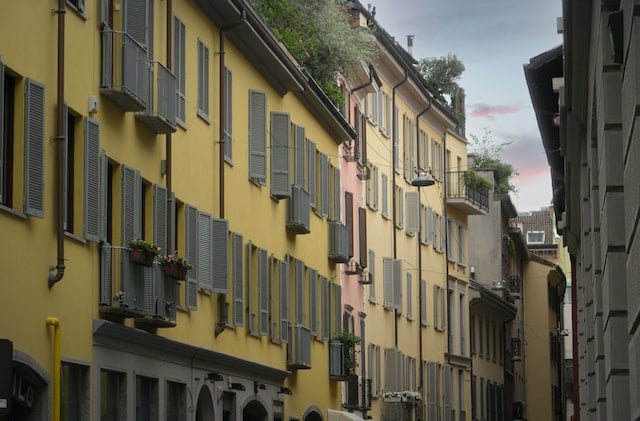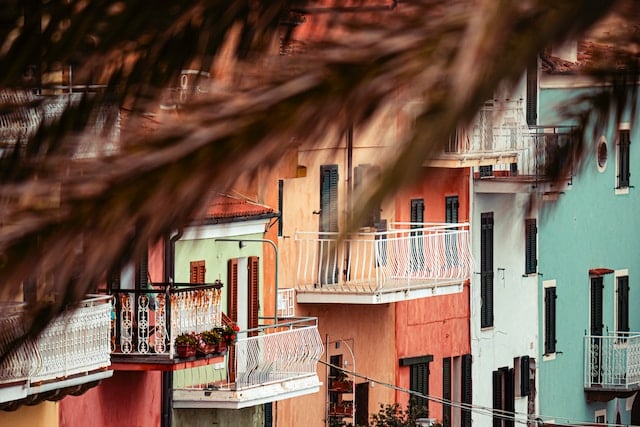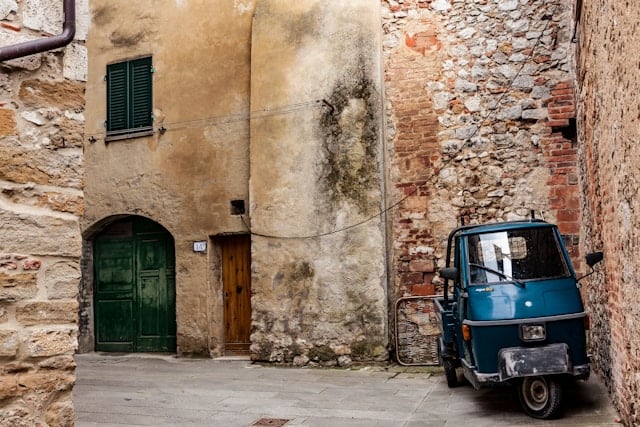Let’s face it, life in Italy is getting more expensive. As elsewhere, rising inflation on the peninsula is pushing up rent, food prices, and also the cost of buying a home – which is 1.1 percent higher than last year, according to national statistics bureau Istat.
EXPLAINED: How much are house prices rising in Italy?
The average property price per square metre in Italy overall has meanwhile risen by 30 percent since 2019. And it’s commonplace to put down a deposit of 10-20 percent. This of course doesn’t include taxes, or registry and notary fees, all of which add up to the thousands.
But it’s not all doom and gloom. There are still ways to bypass inflation and find bargain properties (that are not one euro homes).
- Be location savvy
This one is no secret. If you’re on a shoestring budget, there’s no chance of you getting a lakeside villa on Como or a chalet in the Dolomites. Scrap those ideas, but look at alternatives. There are plenty of lesser-known options.
Can’t afford Garda? Try Abruzzo’s heart-shaped Lago di Scanno. Is the Amalfi coast too expensive for you? Try the coastline of Ancona. Want a major city without the prices? Live in a nearby town with good transportation links. Think Frascati or Tivoli for Rome or Bergamo or Pavia for Milan, to name just some examples.
READ ALSO: The Italian village where foreign buyers pay no property tax
There’s plenty of information out there. Estate agency website Idealista recently published a list of the cheapest city neighbourhoods to buy in: it names San Cristoforo in Catania and Villagrazia in Palermo the cheapest of all, at 668 euros and 702 euros per square metre respectively.
- Know your websites
Of course, high-end sites such as Engel & Völkers or Casa and Country won’t be of much practical use if you’re looking for a cheap home (though you might look at them just for fun). More helpful places to look include Renovita, Gate-away, and Casa.it.
Some of the houses listed on such sites are in need of major renovation, especially those found on Renovita, but not all are.
The usual property websites such as Idealista.it and Immobiliare.it also have stacks of options in their listings, especially when you type in ‘case economiche’.
READ ALSO: How to avoid hidden traps when buying an old property in Italy
Other sites include Subito and Bakeca where you may be able to negotiate a sale directly with the property owner, bypassing high estate agent fees (charged to both buyer and seller in Italy).
If you go down this route, be sure to get paperwork thoroughly checked by a professional and don’t pay anything until you’ve done so, as there are property-related scams to look out for in Italy.

- Find out about ‘bare ownership’
It’s not for everyone, but there’s a type of property ownership in Italy that allows buyers to pay much less than the market value.
The concept, known as Nuda Proprietà or ‘bare ownership’ in Italian, works on the basis that you buy a house with the previous owner still living in it and wait for them to pass on.
It sounds morbid, but many say this type of purchase helps the previous owner, usually a very elderly person, with their living costs.
This could mean the buyer saves as much as 30 percent of the market value. Here’s a detailed look at how nuda proprietà works.
- All about auctions
Auctions, or aste in Italian, are known to knock the current value of houses right down – often repeatedly and by a large amount. You can find auctions listed in online and brick-and-mortar estate agencies, and there are plenty of specialist agents out there who can help you place your bid.
Property auctions are ubiquitous and you can find them for all housing types, from apartments to country homes. According to Idealista, how much you can save tends to vary from 10 percent to 60 percent.
Be aware that, if you’re the winning bidder, a deposit of ten percent of the purchase price is generally payable immediately at the end of the auction.
- Check the averages
There’s a really good trick for finding this out. While no app has yet been developed (app developers, there’s a hint here) some websites already have a calculator built into them which shows average house prices in each area based on their data.
On Idealista’s site, the price per average square metre is calculated automatically for the zone and this is shown on each property listing.
IN MAPS: How Italy’s property prices vary by region
Even if you don’t like that particular property, it’s useful to have a zone average to back you up when going through negotiations on a nearby home.
It’s somewhat less user-friendly, but you can also access official house price data for your chosen neighbourhood, based on property purchases in past years, from the Italian tax agency website here.
See more in The Local’s Italian property section.



 Please whitelist us to continue reading.
Please whitelist us to continue reading.
Member comments